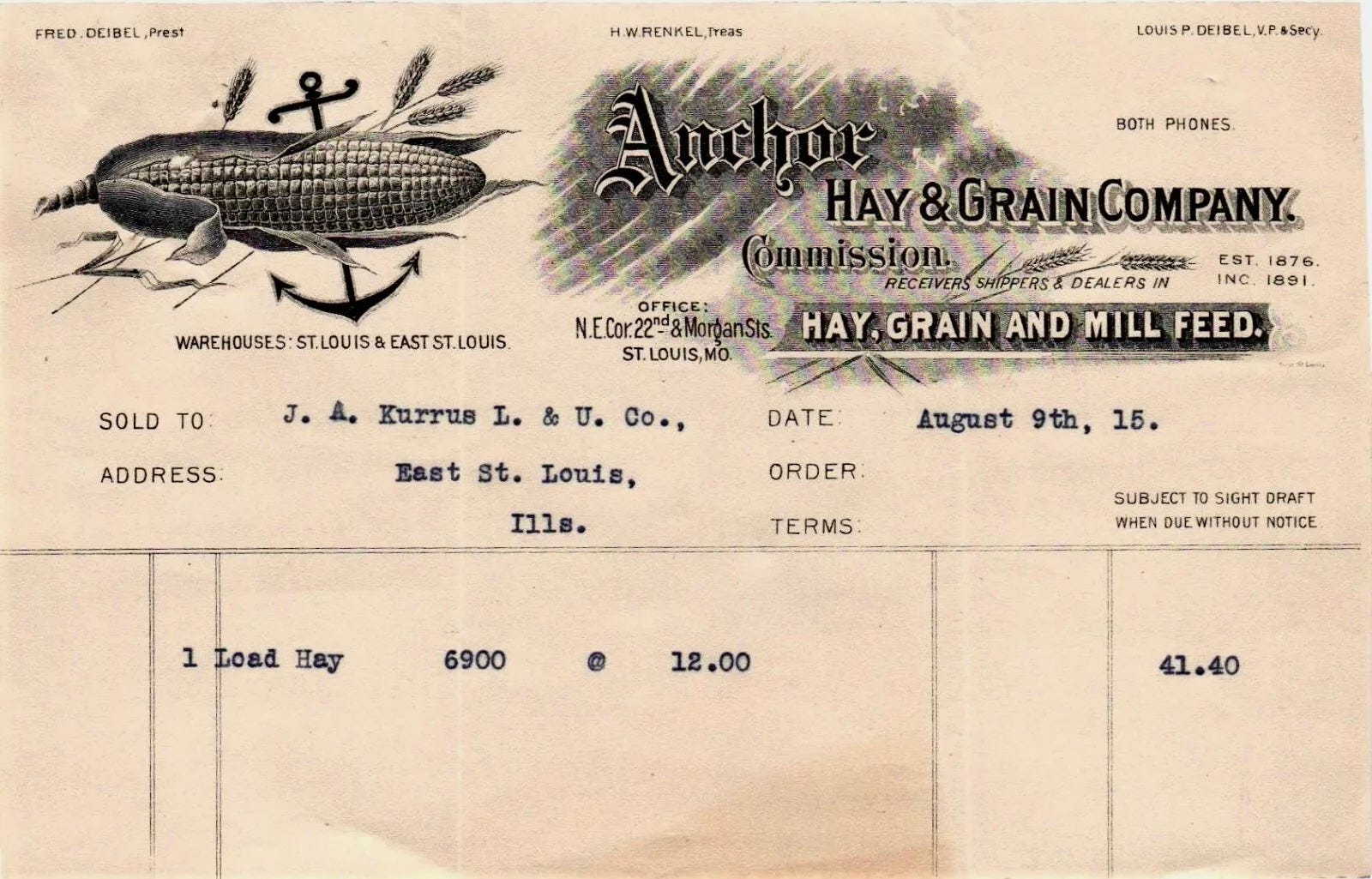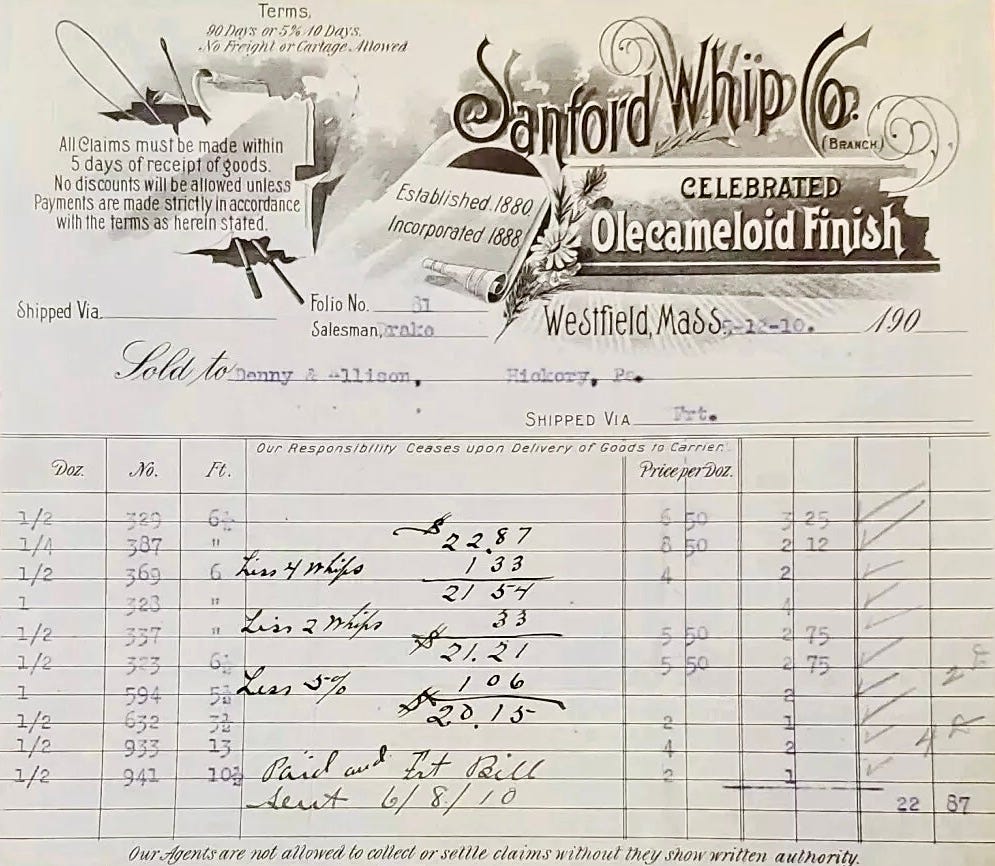The Pleasures of Vintage Billheads
You probably know about letterhead, but do you know about billheads? Let’s take a closer look.
Editor’s Note: This post includes discussion of fairly small and beautiful visual details. If possible, I strongly recommend reading the web version of the post on a computer — not the emailed or app versions, and not on your phone. The web version has larger photos, which makes a big difference. But it’s still a fun post, no matter how you read it. Enjoy! — Paul
You probably know (or at least wouldn’t be surprised to learn) that lots of people collect old letterhead designs. But there’s also a collectibles scene for vintage billheads, which is a fancy word for old invoices, receipts, and order forms. Much like old letterhead, old billheads tend to feature ornate header designs with lots of Victorian-style flourishes and, often, an illustration of the company’s headquarters building or factory (the latter invariably depicted with a smokestack puffing away). But billheads have the added attraction of including itemized lists of customer purchases, which can be very interesting.
The billhead shown above, documenting a 1915 purchase from the St. Louis-based Anchor Hay & Grain Company, is a good example. I love the illustration of the ear of corn with the anchor — an appealingly odd juxtaposition. Here are some of this billhead’s other notable aspects, starting at the top of the page and moving down:
At the very top of the page, the company’s officers are listed in fine print, including the “Prest,” which at the time was a common abbreviation for President.
To the right of the company name, there’s a little notation that says “Both Phones.” I have no idea what that means. Anyone..?
Note that the year is expressed simply as “15,” instead of 1915.
Interesting to see Illinois abbreviated as “Ills.”
At first I couldn’t figure out how the hay was priced. The total price for this order was $41.40, and the unit cost was $12, which means that the quantity was 3.45 units — but the quantity is listed as 6,900. Then I realized that the order weighed 6,900 pounds (!), or 3.45 tons, with the hay priced at $12 per ton. It all adds up!
One measure of billheads’ appeal (at least to me) is that I had a hard time putting a cap on how many of them I’d include in this article. I initially figured I’d showcase half a dozen of them after that first example above, but I kept finding really fun designs that I wanted to share with you, so I thought, “Okay, I’ll do 10.” Then I increased that to a dozen, and now I’m finally stopping at 15.
So: Here are 15 vintage billheads that I recently saw listed on eBay, all more than 100 years old and each with an interesting story to tell. I haven’t purchased or bid on any of them and don’t plan to, but the images are still fun to look at. In each case, my list of observations begins near the top of the billhead sheet and runs downward from there. Let’s take a look, shall we?
Bindley Hardware Co., 1900
Look at the “Co.” in the company name — for a second I thought it was a “6”!
Beneath the company name, there’s the descriptor “Manufacturers and Jobbers.” I love that term Jobbers, which in this context means that they dealt in wholesale goods.
Just below that, the company’s address is listed as “429 to 439 Seventh Ave.” That same number-spanning format appears on many of these billheads. Nowadays, I’m pretty sure the address would just be expressed as “429 Seventh Ave.”
One line down from that, check out the fanciful lettering for “Pittsburgh” — super-tasty!
On the handwritten invoice listing, look at how many of the quantities are for “1/6 dozen” — in other words, two items. There’s also “1/4 dozen,” or three. I’ve never seen such small quantities expressed as fractional dozens, but they apparently wrote it that way because so many of the items were priced by the dozen, not by the individual piece.
The last two items on the invoice are harmonicas and harmophones — musical instruments from a hardware supply company!
Sanford Whip Co., 1910
It’s not every day you see an order form from a whip company!
Look at the shadows behind the company name — pretty astonishing work. Here’s a closer look:
I have not been able to ascertain what “olecameloid” means. Anyone know more?






